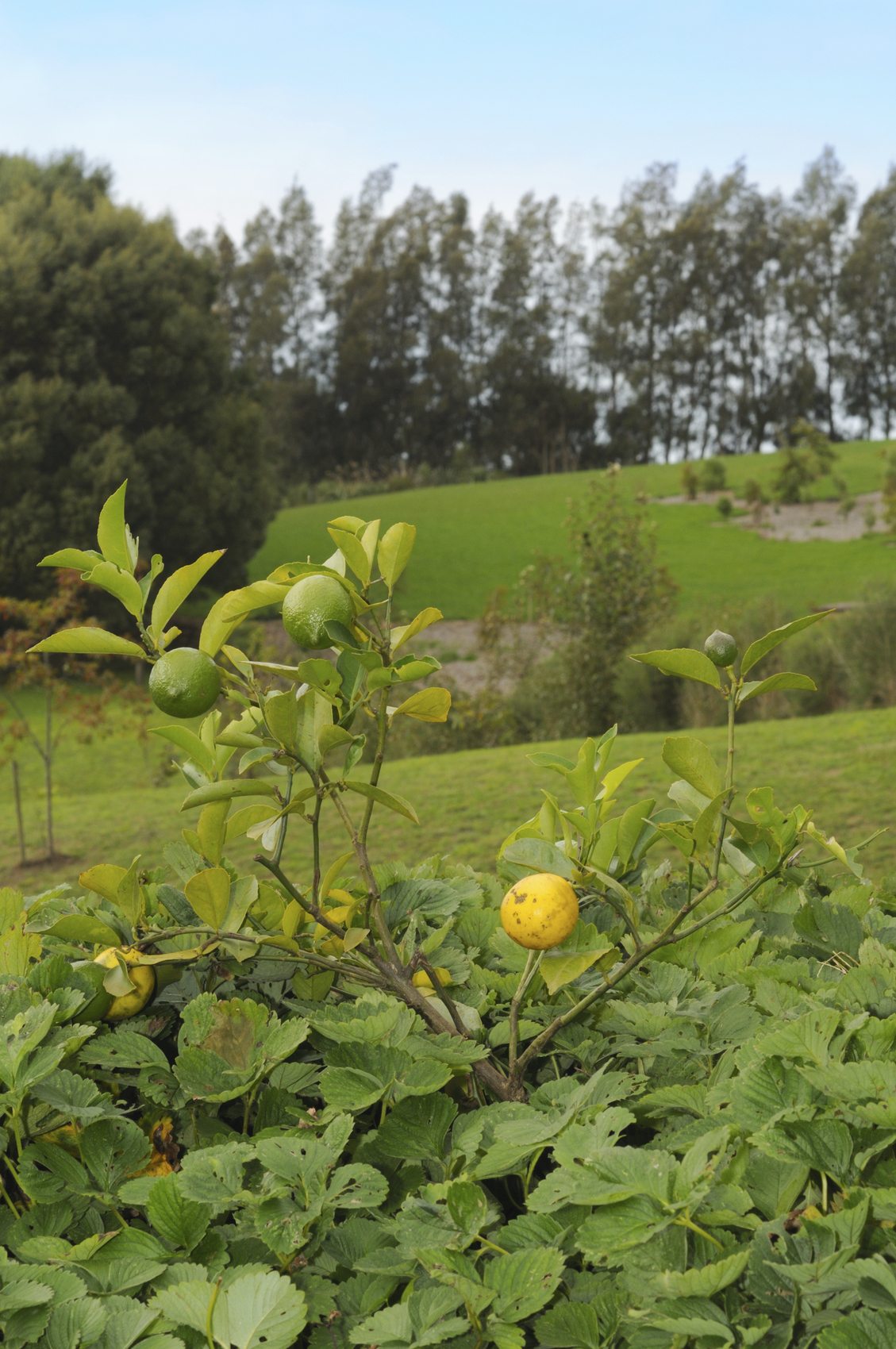Lemon tree companions is a way of planting lemons using the companion method.
It is very excellent because it improves the health of the tree. Lemon Tree companion planting is very easy and organic.
Tree companion planting refers to a process where you plant two or more mutually beneficial plants next to each other.
It’s mainly in fruit, shrubs, vegetables, herbs, and flowers to enable its neighbor plant’s companion plant by providing nutrients, shade, and protection from pests.
When you figure out which plants benefit lemon trees, it helps ensure the tree’s success and will be less vulnerable to risks.
If you select the perfect lemon barrier companion, you allow the tree to draw away harmful influences such as bugs.
However, sometimes lemon tree companion planting is to attract the right bugs because not all bugs are harmful.
After all, they might help eat the things that feed on your lemon tree hence improving fruit production.
Lemon tree Companion plants
Since lemon trees are very productive and a great source of vitamin C, they have many uses like health benefits and cooking flavoring worldwide.
Lemon tree guild results in companion planting since a group of plants that support each other is put together for maximum harvest and to use your space effectively.
A lemon tree guild creates a mini-ecosystem around the tree because of the combination of companion plants that grow together.
What are the best plant companions you can plant under lemons to complement and keep them healthy?
- Marigolds: Excellent companion crop because of its smell, which drives away harmful insects.
- Basil, rosemary, cilantro, and thyme: Herbal companions which complete the lemon flavor.
- Dill is a herb that attracts pollinators that prey upon lemon pests.
- Bay laurels, sweet olive, and cherry laurel are a useful Mediterranean composition.
- Yarrow, borage, black-eyed Susan: These are flowering plants that attract hoverflies that feed on lemon attackers.
- Legumes like Sweet peas, clovers, and alfalfa: Help to leach nitrogen into the ground.
- Lemon balm, parsley, nasturtiums, petunias & tansy: These crops attract wasps that kill destructive bugs and caterpillars.
- Scented geranium, lemon verbena, roses, Jasmine, and mock orange bushes: Pleasant scent acts as an olfactory thrill around a lemon tree.
- Lavender: Has a soft bouquet and a purple tone, which is excellent for the lemon’s golden fruit.
Tips for planting under lemon trees
Lemon trees are usually suitable for growing under warm temperatures, and they are common in the United States Department of Agriculture zone 9-11.
So when choosing the right lemon tree companions, you need to find those with similar hardiness ranges.
The significant advantage of having lemon tree companions is to intensify soil fertility, diminish weeds, and curtail the need for pesticides and herbicides.
What to consider before growing plants under a lemon tree?
1. Growth conditions for lemon tree companions
Choose plants that can thrive under the sun, in well-draining soils, and survive under warm temperatures since that’s what lemons enjoy. So any companion has to match those growth conditions.
Before choosing any plant to grow under a lemon tree, ensure putting one with the same cultural conditions as the lemon tree. It will be easy for the companion to be healthy too since it will merely adapt to the requirements.
2. Choose edible plants as lemon tree companions

When choosing lemon tree companions, it’s better to have those plants to help the tree grow and intensify its flavor.
Plants from the same region suit the other, for example, structural tone to provide an attractive display and plants that will accent the lemon’s green foliage.
Benefits of lemon tree companion plants
1. Feeding lemon trees
Companion planting for any usual plant alone will not meet the tree’s nutrition needs.
You need to choose nitrogen fixers, which will help reduce the number of fertilizers you need to apply.
Since Lemon trees are heavy feeders, remember to select companions that will enrich the soil with nitrogen, such as legume families like sweet peas and alfalfa.
2. Attracting pollinators is useful for lemon tree companions

Lemon tree companions help attract pollinators responsible for the production of fruits and the tree blooms.
As lemon blossoms, it attracts pollinators, but when it has a plant such as a dill under it, more pollinators will come.
3. Lemon tree companions keeps pests away
When you are protecting your lemon tree, planting companions is an excellent option because some will help keep pests away from the plants.
For example, Marigolds help in repelling insects because of their fragrance above the ground, which targets insects below the surface.
Other companion plants such as nasturtium attract aphids, which eat destructive caterpillars off the lemon trees.
Lemon tree landscaping

Lemon landscaping is how you choose to grow your lemon tree and the environment you put it in. If you are planting lemon with companions, you might need a landscape expert to help you design the plants and also know which particular plant fits to be near the lemon tree.
So you need to know what exactly you are buying and how you are going to plant it. When purchasing a lemon tree, try not to get one that already has fruits. It might be hard for it to thrive when it comes to transplanting it. Also, choose a lemon tree with an excellent shallow root system.
You can grow lemons in a container or a backyard directly in the ground, depending on your preference and surroundings.
If you buy a lemon tree in a small container, you will need to put it into a larger one or directly to the ground before it outgrows the small pot.
How to grow a lemon plant
1. Remove the plant from the small pot
Gently squeeze the container to loosen the soil, and it will help you remove the lemon tree smoothly hence repotting the lemon tree from a small pot to a bigger one.
2. Dig a hole or prepare the big container.
When you dig a hole, make it more in-depth than the pot in which the young tree has been and mix potting mix, chicken manure, and any other organics.
3. Water the hole or surface
Before placing the tree into the new location, you need water to keep it moist before putting the plant in the hole or large container.
4. Place the lemon plant
Gently Carry the plant out of the small container and place it into the new hole and cover with the potting mix to fill the gaps.
5. Water the newly planted tree
Water the plant again after covering it with soil and tamp it properly until the water drains into the ground. In case the lemon plant has any flowers or fruits, cut them off to help the new plant thrive on its own.
Landscaping with Meyer lemon
A Meyer lemon is a mix of lemons and oranges and has a deep golden yellow color and a sweeter taste than the actual lemon.
It has thicker skin and can produce fruits all year round, peaking during the winter season.
Meyer lemon is lovely and straightforward to grow, adds a lush green beauty to the landscape. It has sweet and delicious fruit, less acidic, making it time for gardeners to cultivate it.
Meyer lemons are self-pollinating, meaning that pollination occurs even when they do not have a tree nearby.
When its blossoms fall, the tree produces small green fruits that grow slowly throughout the year, and with time, the fruits turn to a rich golden yellow.
Meyer lemon is a hybrid of a lemon and a mandarin orange, and its discovery was in China in 1908.
Meyer lemon was very popular until the trees carried a virus known as Tristeza attacking other citrus trees.
Benefits of landscaping Meyer Lemon
The uses below help you when it comes to landscaping meyer lemon and how to use it;
1. Welcome beauty
Its lush green foliage and the golden yellow fruit adds a welcome beauty to the landscape.
2. Its flexible
When you are growing Meyer lemon, you can plant it as a large shrub or train it into a small tree. Having it short makes it a perfect porch tree, or you can use it in a courtyard if it’s a big tree.
3. Welcomes companions
Meyer lemon can have companions such as herbs like basil, rosemary because of their delicious fragrant arrangement and for their combination that you can use for cooking.
4. Informal paling
Meyer lemon can act as a fence if you need some privacy to grow it as a large shrub. It will make a perfect blockage for your house.
5. Nice container plant
Since Meyer lemon is a citrus hybrid, most of the citrus trees grow well in pots, and so does this lemon type. You can carry the container inside during winter seasons or outside for some sunlight whenever it’s necessary. It can go anywhere you wish it to be if it’s in a pot.
Lemon tree shade
Lemon trees are susceptible to cold weather conditions than all other citrus trees.
Due to this sensitiveness, you need to plant a lemon tree on the south side of your house to prevent the cold north winds.
Growing lemon trees near the house or putting them indoors during the winter will help protect them from frost.
A lemon tree needs full sunlight to have proper growth, blossoming, and fruiting.
Try not to have a lemon tree under any tree shade or objects obstructing its light because it needs to get the direct sun to function.
If it’s the summer period, you will need to consider putting a lemon tree in the shade during afternoon hours for at least two hours.
Doing this helps it cool a little bit and prevent the soils from drying out so fast. The shade also keeps the tree from sunburns and its effects.
If your lemon tree doesn’t bloom, it indicates the plant needs more light. So you will need to take it out for six or more hours to get what it needs to thrive and bloom.
Frequently Asked Questions
Lemons and limes are all in the citrus family, and if you give them proper care and pruning them, lemons and limes can grow jointly. Plant them 2-5 feet apart, or if you use intensive planting, you can have up to 4 trees in one hole, and they expand as a single tree
The same goes for oranges and lemons; you can grow them together though they do not require cross-pollination. Most citrus trees can produce fruit without any pollination.
The lemon tree is self fruiting, so you will not need another tree for it as a pollinator to get fruit. You don’t even need bees to pollinate the flowers, so you can even hand pollinate the tree to produce fruits.
Lemon trees can grow under a partial shade but not a full shade for 24hours. Lemons need full sun to bloom and thrive. If they are in a container, it needs to be large enough for long-term growth, and you need to bring it out to the sun for at least six hours and more. Lemons can grow from anywhere so long as the tree can access sunlight daily.
Growing lemons near your house should help it a lot because it will get protection from the frost, and that’s what a lemon tree needs. They prefer well-draining soils, which are slightly acidic and full sunlight for adequate growth.
